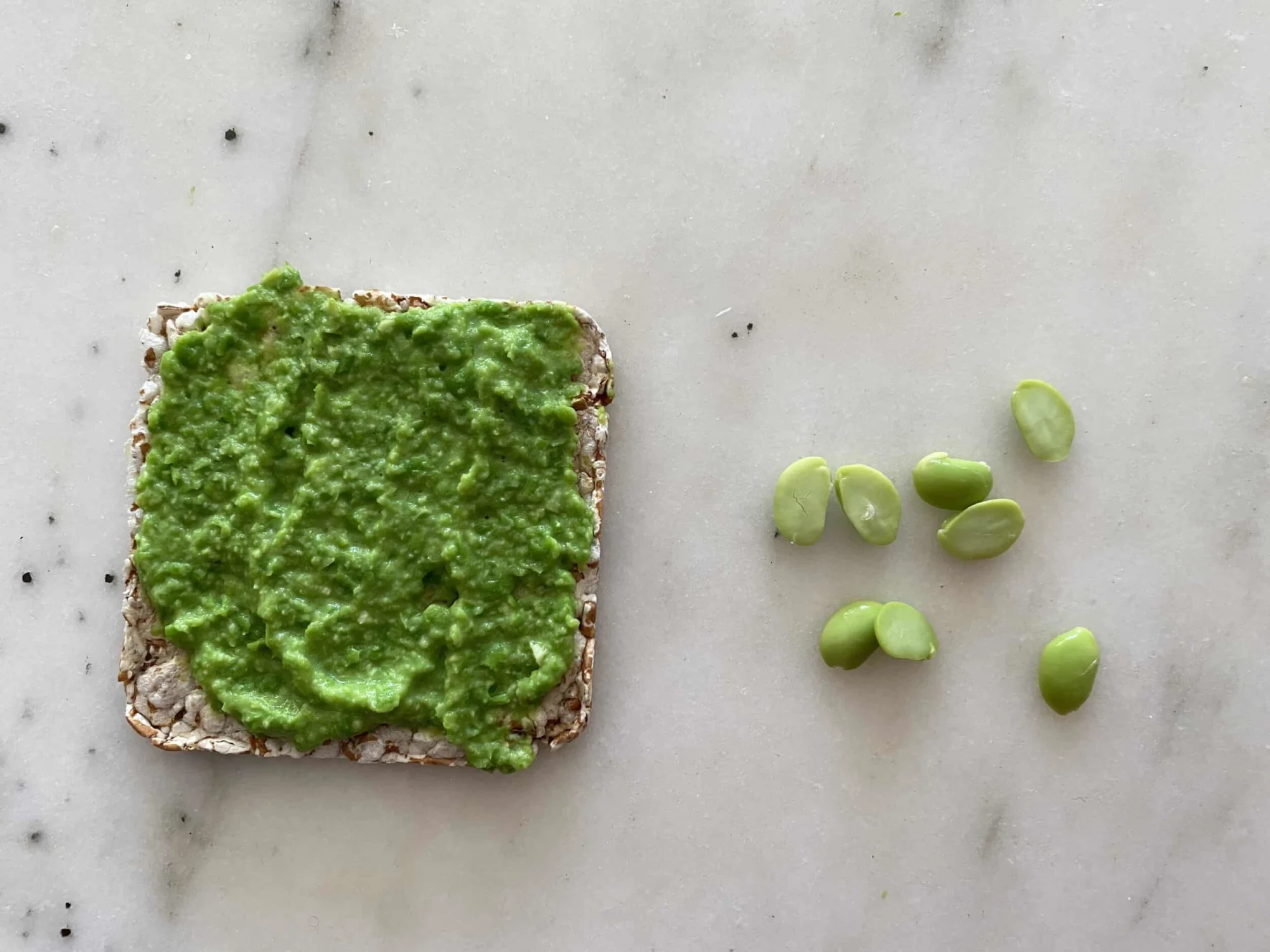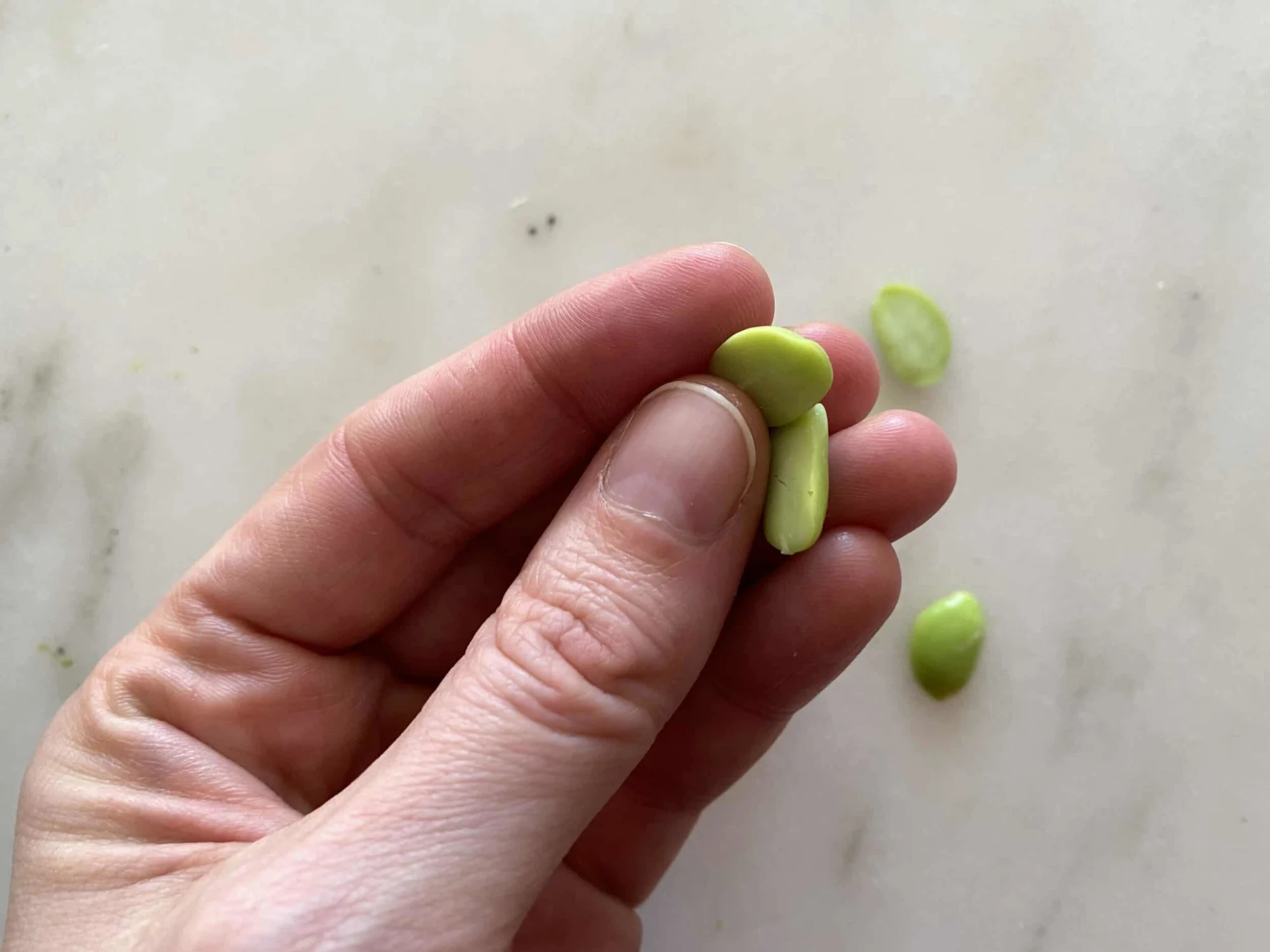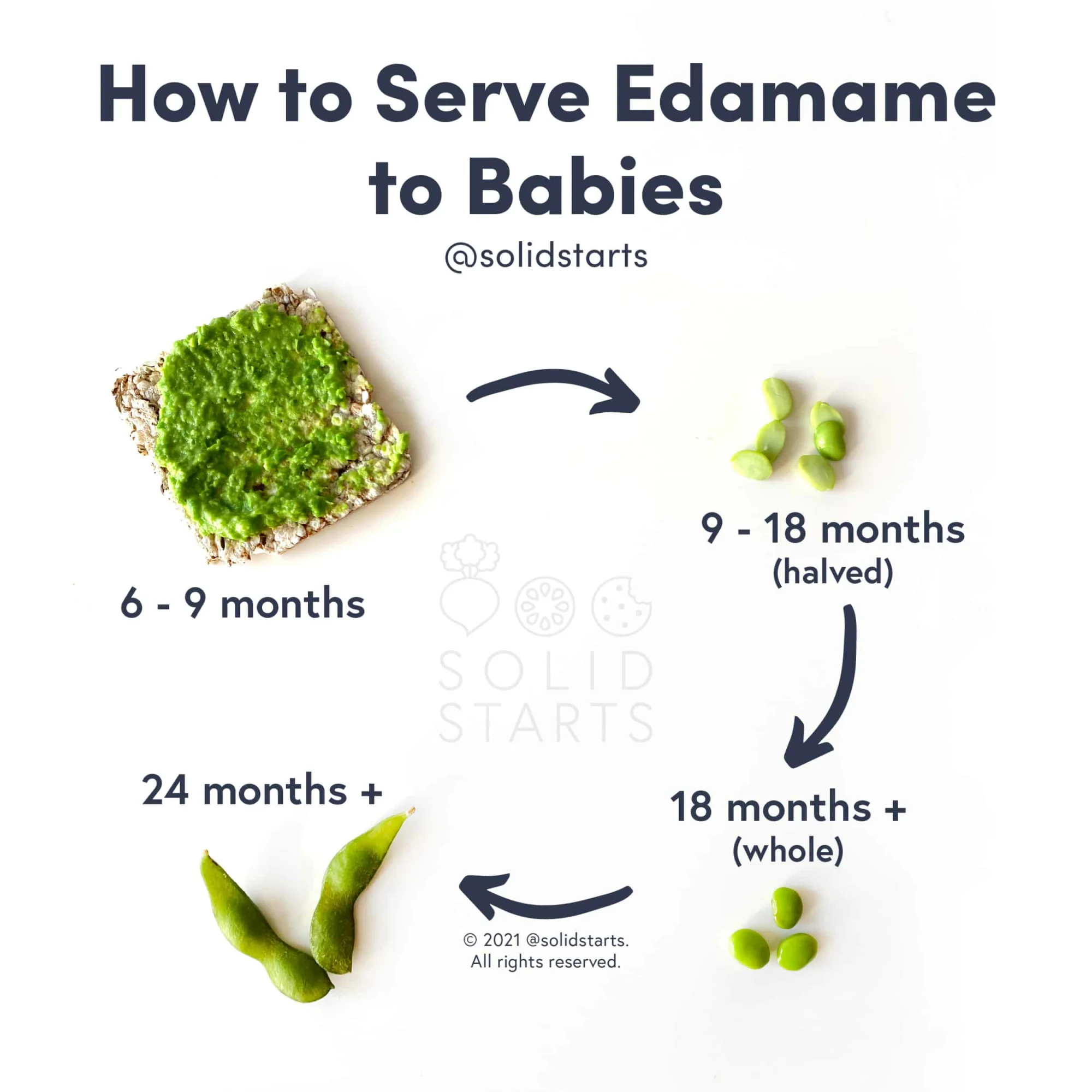Access our First Foods® Database in the Solid Starts App.
Learn moreEdamame
Legume
Age Suggestion
6 months
Iron-Rich
Yes
Common Allergen
Yes

When can babies have edamame?
Edamame may be introduced as soon as baby is ready to start solids, which is generally around 6 months of age.
Edamame is the Japanese word for young soybeans (also called soya beans and green vegetable soybeans) that are picked from their fuzzy pods when the legumes are tender and green. The United States is the global leader in the production of soybeans, which are native to Asia, where they have been cultivated as a staple food for centuries.
How do you serve edamame to babies?
Every baby develops on their own timeline, and the suggestions on how to cut or prepare particular foods are generalizations for a broad audience.
6 months old +:
Boil or steam edamame, remove the beans from the pods, mash or puree the beans, and, if desired, mix in a bit of breast milk, formula, or olive oil to help smooth out the mash. Serve mashed edamame on its own or spread on toast strips or other age-appropriate foods.
9 months old +:
Remove cooked edamame from their pods, split each bean in half, and offer the soft edamame halves directly on baby’s tray or table for them to pick up with their developing pincer grasp. You’ll have to remove the thin outer skin from each bean in order to split it in half. The skin itself is not a choking hazard, although they can cause some gagging or discomfort if they stick in baby’s mouth.
18 months old +:
At this age, if a toddler is chewing well and pacing themselves as they eat (not shoveling or overstuffing food in the mouth), they may be ready to have whole edamame beans (removed from the pod) without halving the beans or removing the papery skin on each bean. Make sure to set up a safe eating environment and that you remain within arm’s reach of the child during mealtime.
24 months old +:
Once a child can understand and follow instructions, you can try offering edamame in the pod and teach the child how to open the pod themselves. Model opening an edamame pod yourself, then let the child try. Make sure to set up a safe eating environment and that you remain within arm’s reach of the child during mealtime.


Videos
Is edamame a choking hazard for babies?
Yes. Edamame is round, firm, and slippery, qualities that can increase the risk of choking. To reduce the risk, prepare and serve edamame in an age-appropriate way as described in the How to Serve section. As always, make sure you create a safe eating environment and stay within an arm’s reach of baby during meals.
Learn the signs of choking and gagging and more about choking first aid in our free guides, Infant Rescue and Toddler Rescue.
Is edamame a common allergen?
Yes. Edamame are young soybeans, and soybeans are a common food allergen among infants.
However, there is good news: less than 1% of children are allergic to soy, reactions tend to be mild (although severe reactions to soy have been reported), and almost 70% of children outgrow their allergy by age 10. For these reasons, soy is not classified as a Global Priority Allergen by the World Health Organization.
If baby is allergic to soy, avoid soybeans and any products containing soy, such as tofu, tempeh, edamame, miso, natto, soy sauce, tamari, and prepared food that lists soy as an ingredient on the food label. In the United States, soy is designated as a common food allergen and therefore, it will be declared on a food label if soy is present in the ingredients. When shopping, avoid products that contain the phrase “contains soy” on the food label.
Most individuals with soy allergy can tolerate highly refined soy oil and soy lecithin (a common ingredient added to foods) because they contain very little allergenic protein. However, be sure to check with your healthcare provider before offering food with soy oil or soy lecithin to a child with soy allergy.
Although a significant percentage of children with soy allergy may also be sensitized to peanut (and vice versa) on testing, this does not always translate into a clinical allergy. If baby has experienced an allergic reaction to soy, and you have not yet introduced peanut, you may wish to introduce peanut under the supervision of an allergist. However, there is no need to remove peanut from the diet or pursue peanut testing if it is already being eaten without any reaction. Likewise, babies with peanut allergy do not need to eliminate soy if it is already well-tolerated in the diet.
Some babies with cow’s milk allergy are sensitive to soy. In fact, 10 to 14% of young children with cow’s milk allergy also present with allergic reactions to soy. This is more likely to be seen in babies under 6 months of age. For this reason, many pediatricians recommend that babies with a known milk allergy preemptively avoid both cow’s milk and soy for the first 6 months of life, and they may recommend extensively hydrolyzed or elemental infant formula instead of soy formula during this time.
Individuals with Oral Allergy Syndrome (also known as food-pollen allergy syndrome), especially those allergic to birch pollen, may experience symptoms after the ingestion of soy. Oral Allergy Syndrome typically presents with short-lived itching, tingling, or burning in the mouth, and is unlikely to result in a severe reaction. That said, serious reactions to soy in individuals with birch pollen allergy have been reported, most commonly in individuals who are also allergic to peanut.
Soy is a known cause of food protein-induced enterocolitis syndrome, also known as FPIES. FPIES is a delayed allergy to food protein which causes the sudden onset of repetitive vomiting and diarrhea to begin a few hours after ingestion. This is termed acute FPIES. Left untreated, the reaction can result in significant dehydration. When soy is in the diet regularly, FPIES can present as reflux, weight loss, and failure to thrive. This is termed chronic FPIES. Symptoms generally improve with elimination of soy from the baby’s diet. Thankfully, like other forms of soy allergy, FPIES that presents early in life is generally outgrown by the time the child has reached 3 to 5 years of age.
Soybeans and soy-containing products are commonly prepared with other common allergens, such as egg, fish, peanut, and sesame. It is important to introduce common food allergens on their own and rule out an allergy before serving them together.
When introducing soy to baby, start with a simple food that isolates the ingredient, such as cooked and pureed edamame, plain tofu strips, or soy milk mixed into mashed vegetables, and watch for any adverse reactions. As with all common allergens, start by serving a small quantity on its own for the first few servings, and if there is no adverse reaction, gradually increase the quantity over future meals. Once common food allergens are successfully introduced, it is recommended to keep them in the diet regularly (twice weekly, if possible).
Is edamame healthy for babies?
Yes. Edamame is rich in protein, fiber, plant-based omega-3 fatty acids, folate, choline, vitamin B6, iron, zinc, and more. Collectively, these nutrients help support muscle function, digestive health, neurodevelopment, metabolic processes, energy, immunity and so much more. To help boost iron absorption from edamame, pair it with a vitamin C-rich food, like bell pepper, broccoli, or citrus.
Do I need to worry about the phytoestrogens in soy?
No. Soy, soy products, and a wide variety of other foods contain phytoestrogens, which are plant compounds that can behave similarly as estrogen in the human body. Estrogen is present in humans of all genders and is not only limited to females. There is no evidence to suggest limiting phytoestrogen intake in babies and toddlers, and some studies suggest that consuming foods that contain phytoestrogens can offer beneficial properties, such as decreasing the risk of breast cancer and promoting bone health. That said, there is no perfect food, and consuming a balanced diet with a wide variety of whole foods is key to one’s health.
Our Team
Written by
Expert Tips Delivered to Your Inbox
Sign up for weekly tips, recipes and more!
Copyright © 2025 • Solid Starts Inc








